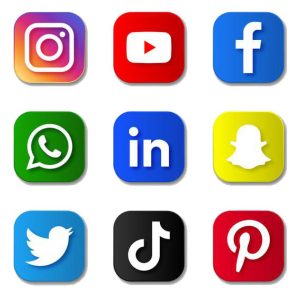8 Steps to Introduce Inbound Advertising for Your Online Shop
Before you can begin using Inbound marketing to promote your online store, you must first understand your audience. You can do this by creating buyer personas, fictional representations of your ideal customers based on real data. Buyer personas include details about customer demographics, behavior patterns, goals, and motivations. By understanding these factors, you can create content that is both informative and interesting to them. Inbound marketing is an excellent way to attract new customers.
Search engine optimization.
The first step in launching an inbound marketing campaign is to use search engine optimization (SEO). SEO helps increase website visibility organically. A unique URL for the main page and each product page are essential. These should include the product name, category, and website name. Page tags, which typically run from 50 to 60 words, should be used to optimize content and make it more appealing to your audience. By utilizing SEO, you will be able to rank higher in search results for your targeted audience.
The next step is to create useful content that can be shared with your target audience. This can be in the form of blog posts, social media posts, or paid ads. The content should clearly communicate your brand’s goal and increase conversion rates. SEO and paid campaigns can further widen the reach of your content, which helps more users find helpful solutions. Once you’ve created helpful content, you can start building a link-building campaign to increase traffic and sales.
Blogging.
Inbound marketing has several key elements to successfully reach your target customers. The first step is to understand your customer. Create buyer personas based on real-life data. These profiles include demographics, behaviors, and goals of a typical customer. You can use this information to develop your content strategy. Next, create a path to purchase. Including product images in your blog posts is an excellent way to drive traffic to relevant product pages.
Another essential element of inbound marketing is a search engine optimization boost. SEO makes it easier for potential customers to find your business, which is key in building a successful online business. Inbound marketing has four main stages that should be followed to boost your site’s ranking on search engines. The next step is to develop a content marketing strategy that includes relevant keywords. Your content should also be optimized for search engine optimization (SEO), so that it can be easily found by potential customers. https://remoteok.com/@backlinkboss
User-generated content.
Before launching your user-generated content inbound marketing campaign, you must define your audience. What are your ideal customers looking for? What will be the purpose of your campaign? These are similar to your inbound marketing objectives. It is imperative to define your goals so that you can measure success and learn from it. Here are some tips to help you get started. Identify your target audience and define your objectives.
User-generated content boosts brand trust and credibility. According to statistics, 88 percent of people trust recommendations from friends and family. Creating this content on your website will increase your customers’ trust in you and your brand. In addition, it can also boost your SEO benefits. By attracting more people to your website through user-generated content, you will see a dramatic increase in sales and conversions.
Consumer-generated content can be used throughout the customer journey, especially on product pages. Instagram photos are one example of shoppable content created by consumers. Dune London added Instagram shoppable photos to their website. They are not just popular with younger consumers – their parents will also be influenced by it! For brands looking to appeal to older customers, using consumer-generated content will increase your brand’s reach and engagement.
Social media.
To launch an effective inbound marketing strategy, you must understand your customers and their needs. To do this, you should create buyer personas, fictional representations of your ideal customers based on real data. These personas should include key details like the demographics, behavior patterns, and goals of your ideal customers. Using these personas to create effective content will help you build trust and authority with your audience. https://www.smartmenus.org/forums/users/backlinkboss/
Content marketing is an essential aspect of inbound marketing. The more your customers engage with your brand through content, the more likely they will buy from you. By using content marketing, SEO, social media, and video marketing, you can attract the right kind of people who will be interested in your brand. Inbound marketing will help your customers find you by creating valuable content and personalizing your social media accounts.
Paid media
One of the most effective ways to drive targeted traffic to your eCommerce website is through paid search advertising. Paid search advertising can drive more traffic to your store, as it attracts visitors with high purchase intent. Compared to social media advertising and display advertising, paid search advertising can help your store meet its conversion and transactional goals. If you haven’t already used this type of advertising, you should consider using HubSpot’s free ads tool, which integrates with Google and Facebook. The tool will help you create a list of targeted users and help you reach your sales goals.
Catalog optimization
Inbound marketing is a strategy where you engage visitors, convert them to consumers, and save money. Inbound marketing is divided into four phases: attraction, engagement, conversion, and gratification. Each phase has its own purpose, and incorporating it into your online store’s marketing strategy is essential. The following are some tips for boosting your online store’s conversion rates:
Email marketing.
The first step in launching your email marketing campaign is to create a compelling subject line. The subject line should appeal to the reader’s feelings, hopes, or ambitions. It should be at least 50 characters long. Another important aspect of the email is the sender’s name, which answers the recipient’s first subconscious question about the source of the email. This should remain consistent across all campaigns. You can also include links to your website in the subject line.
The next step in email marketing is building an email list. Most people just throw up an opt-in form on their website and hope that people will sign up. However, this is a terrible strategy – you need a lead magnet or compelling offer to get people to sign up. By creating a lead magnet or offer, you can build a long-term email list. Once your list has a strong foundation, you can start building your email marketing campaign and see the rewards.
Site search.
The first step is to understand your target market. Create buyer personas for your target audience. Buyer personas are fictional representations of your ideal customers. They include information about their demographics, preferences, behaviors, and goals. Knowing who your target market is will allow you to develop content that will attract them. Make sure that your content is relevant to their needs. Use a search feature on your website that will help customers find the products they are looking for.
Inbound marketing uses SEO and content marketing to generate more visitors and sales for your online store. This strategy helps you build your brand authority in your niche, and generates organic traffic. You’ll see an increase in sales and return on investment compared to outbound marketing, which is expensive and yields a lower ROI. With inbound marketing, your goal is to provide a positive experience for your customers and create brand advocates.



